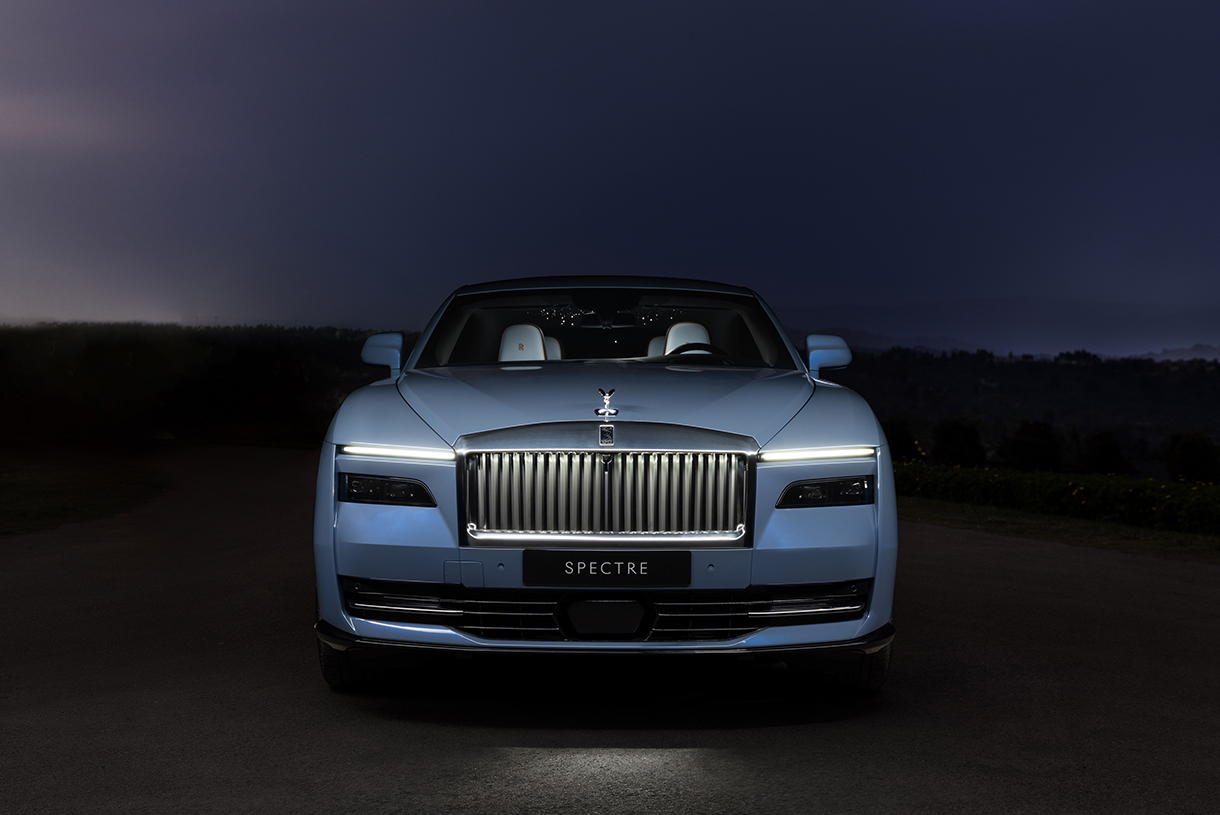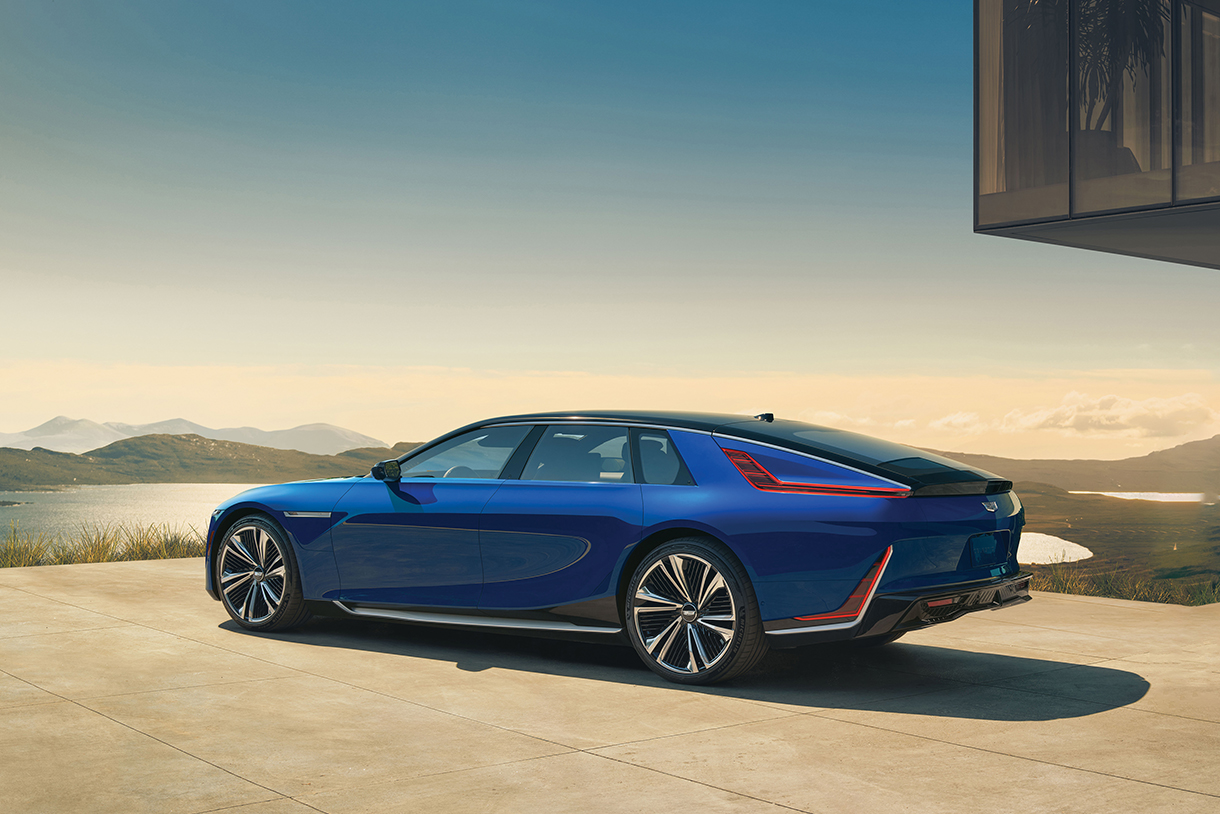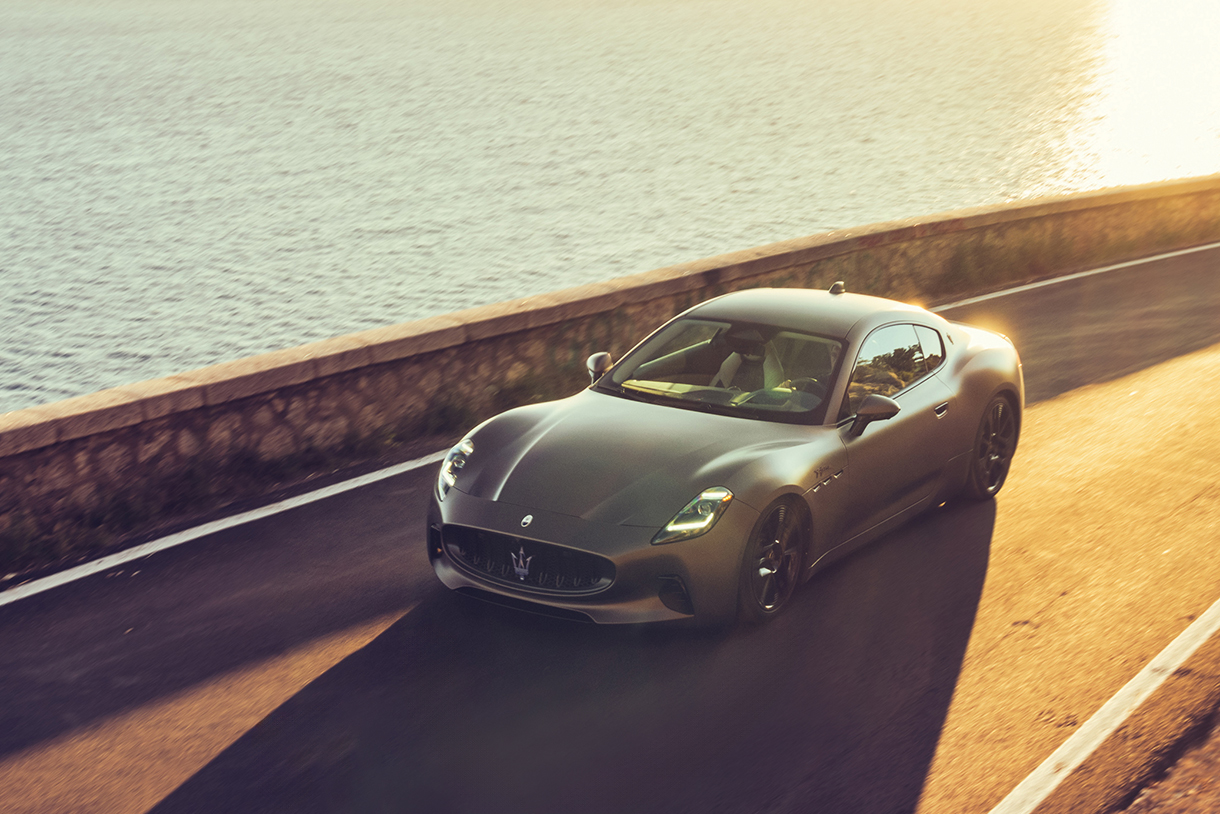
Rolls-Royce Spectre
Vehicles
Unveiling the Cutting-Edge Luxury EVs Set to Transform the Road
Written By Brett Berk
The New EVs
The future of vehicles has arrived, and, despite newsworthy headlines about solar-powered or flying cars, the consensus is in. It’s electric. Battery-powered cars increased their market share in America by nearly 50 percent last year, making them the fastest-growing segment in the automotive category. Over 1 million vehicles sold last year were electric.Intriguingly, adoption rates are highest in the luxury market. At the higher end, fully electric vehicles (EVs) accounted for one-third of all luxury car sales in 2023. According to a recent McKinsey study, EVs should “account for at least 50 to 60 percent of the luxury segment by 2030,” doing so “whilst achieving the highest profit margins.” The study credits this rapid and intense growth to luxury consumers’ desire for driving performance, standout design, innovation, sustainability, and exclusivity.
In order to meet the needs of this clamoring and rapidly expanding segment, a number of luxury automakers have promised electrification of their entire vehicle lineups by the end of this decade. Yet within this commitment, each automaker is approaching their electrification strategy differently, pushing into the technological and societal unknowns of what lies ahead via a path that exemplifies their brand values.
The results are best demonstrated via manufacturers’ initial top-tier offerings, which combine the best of their engineering work, technological breakthroughs, design innovations, and performance capabilities. The following suite of luxury vehicles from venerable manufacturers (even the youngest of them is more than 100 years old) represent a host of compelling body styles and a variety of approaches in committing to electrification.

Rolls-Royce Spectre
Rolls-Royces are known for three things: opulence, effortless thrust, and silent operation. Until now, some of these characteristics counteracted others. Case in point, in order to acquire the proper grunt, hefty and cacophonous 12-cylinder engines were included, requiring hundreds of pounds of sound-deadening insulation. With electrification, this contradictory paradigm vanishes.Not only does the big battery pack under the floor of the marque’s first all-electric production car, the Spectre, provide prodigious torque and whisper-quiet propulsion, it also acts as its own road noise isolator—making the big coupe one of the world’s quietest vehicles.
“Our objective in creating Spectre was to maintain the consistency of the luxury experience our owners expect,” says Gerry Spahn, head of communications for Rolls-Royce Motor Cars North America. “Our clientele wants to enjoy the quality of workmanship improved through technology. What was most exciting was our ability to enhance the silent and powerfully smooth ‘magic carpet ride’ that Rolls-Royce is known for.”
The Spectre, with its electric power train, is expected to bring new customers into the brand, those seeking the advancements of battery power combined with the tradition of Rolls-Royce’s old-world build quality, tailoring, and marquetry. “About four in 10 Spectre commissions we have come from clients who are totally new to the brand,” Spahn says. “While each of them has their own motivation, the one common reason they had not commissioned a Rolls-Royce before was the desire to have an electric vehicle. Spectre delivers on the EV proposition in the ultimate Rolls-Royce manner.”
Spectre pushes the envelope in other ways as well, particularly in the realm of delight. Rolls had already developed its Starlight Headliner, a feature incorporating a literal constellation of thousands of blinking and even shooting LED pinpoints on the interior’s roof. With Spectre, it introduced a similar effect on the door panels. One drive reveals the fact that electric power and Rolls-Royce are a combination that’s meant to be. EV Range: 291 miles. From $422,750; rolls-roycemotorcars.com

BMW i7 M70
The seventh generation of BMW’s flagship Seven Series takes an interesting approach to power train distinction. To provide customers flexibility in choosing the motivator that best suits them, it offers the 7 in just one body style—a massive sedan—but allows the choice between internal combustion, plug-in hybrid, or fully electric.“We believe the luxury vehicle experience, from both a design and tactile perspective, should carry over regardless of the power train chosen,” says BMW luxury class product specialist Alex Dabrowski. “A customer can design a 7 Series in precisely the same way, gas or electric, and one wouldn’t spot any difference between the two without pressing the start/stop button.”
BMW does this for good reason. It believes, according to Dabrowski, that “customers in the luxury space still want the creature comforts of an ultra-premium vehicle—lavish seating, the latest technology, and top-tier driving dynamics—without making any compromises simply because they chose a particular power train.”
Having experienced both gas and electric versions of the 7 Series, we can say with certainty that we would choose the battery-powered version. Not only is the M70 more potent than its gas-powered rival (650 hp vs. 536 hp) and quicker (0–60 in 3.5 seconds versus 4.1), it’s also a more fun, more dynamic drive. And, without an engine or exhaust system, it’s quieter, which may be the ultimate luxury.
The i7 also features an almost avant-garde use of materials, with faceted, backlit crystalline trim on the gear shift, infotainment knob, and power seat controls, as well along the length of the dash. The Executive Lounge package spoils occupants of the two back seats—massaging, power-adjustable thrones with padded headrests. Overhead, an available 31-inch screen folds down for immersive, theater-like viewing. And the glass sunroof is wired with starlike LEDs for a near celestial experience. It’s more coddling, and more dynamic, than any 7 before. EV Range: 291 miles. From $169,495; bmwusa.com

Mercedes G-580
The Mercedes-Benz G-Wagon is instantly recognizable. Its rectilinear style has remained virtually unchanged during the SUV’s 45-year run. So, when creating the first all-electric G, Mercedes took a different approach than it has in electrifying its other long-lived vehicle lines, such as the S-Class luxury sedan or GLE luxury SUV.While those models have a separate EV analogue, with a completely different body under the brand’s EQ moniker, the battery-powered G looks almost exactly like its gas-powered sibling. It even maintains the internal combustion G’s nomenclature, simply adding a distinctive number.
“I could ask today, how many customers in the luxury segment know exactly what kind of engine they have?” says Mercedes-Benz Chief Technical Officer Markus Schäfer. “Yes, there are customers who know I want a V8. I want a V12. But so many customers if asked, what engine do you have in a car, they would say the model number—it’s a 200, it’s a 300, it’s a 400.” So long as it has the proper style and gets them around with the proper alacrity, they are happy.
The electric G does all of this, even with G’s typical off-road prowess, through the use of unique, two-speed electric motors that mimic the boulder-crawling, low-range gearing of the traditional G. And, despite its big and well-protected battery pack in the undercarriage, it has the same massive ground clearance, and can even wade in deeper depths than a gasser G.
Not that many G drivers take their vehicles off road. They are drawn to the car’s luxury and unique style, and are rather agnostic about power train. They simply want the best one. “This is an amazing icon,” Schäfer says. “But we have to keep it fresh. And we are keeping it fresh.” EV Range: around 240 miles. From $150,000, estimated; mbusa.com

Cadillac Celestiq
The Celestiq is a long, low, bubble-backed four-door hatch that looks like nothing else on the road. It promises speed and agility, with around 600 hp, all-wheel drive, and a rear-wheel steering system that shrinks its significant scale from the driver’s seat. Which is good, since it’s as long as an Escalade.Each Celestiq will be hand-built and eminently customizable. Customers garner the in-person help of a design concierge located near Detroit at Cadillac House at Vanderbilt on the grounds of the General Motors Technical Center, a National Historic Landmark designed by famed mid-century architect Eero Saarinen. Here, clients choose from a nearly infinite range of exterior and interior colors, materials, and trim bits, with the goal of inciting owners to go bold and make the car their own.
“The Celestiq reestablishes the iconic brand as the Standard of the World,” says John Roth, vice president of global Cadillac, referring to the marque’s 20th-century advertising catchphrase, when it was a global leader in design and innovation.
Roth explains the impetus behind Celestiq: “The EV consumer and ‘traditional’ luxury consumer are merging,” he says. “Early EV adopters were willing to sacrifice on the luxury front to get the EV technology they desired. But more recent luxury customers considering their first EV are no longer willing to make those sacrifices in the name of technology. They expect their EVs to carry the same level of luxury as the internal combustion vehicle they’re coming from.”
Cadillac is taking a gamble on a mid-six-figure electric flagship but is counting on research that shows the EV audience is more affluent and more likely to seek out the latest fashion trends in their quest for attention-getting style. And, perhaps most importantly, they’re more open to trying automotive brands they’ve not previously owned. Celestiq certainly meets those needs. EV Range: 300-plus miles. From $340,000; cadillac.com

Maserati GranTurismo Folgore
Iconic Italian automaker Maserati is best known for sporting grand touring cars, the kind of elegant two-doors just large enough to carry a pair of people and their luggage on a long weekend trip to their beach house or mountain getaway. Unlike the purer, rip-roaring sports cars of neighboring brands like Ferrari or Lamborghini, Maseratis have always had a louche and sumptuous elegance.This electric offering carries on that tradition. “Maserati has always been and remains synonymous with luxury, even in the new electric age. We will continue to stand for performance, luxury, design, and distinctive Italian style, always with the customer at the center,” says Kelly MacDonald, head of Maserati North America. “Electrification just allows us to push these tenets further.”
This is no understatement. The spectacularly handsome GranTurismo Folgore is essentially a gas-powered GranTurismo, with the engine replaced by batteries. But with 818 hp, compared to its petrol-burning brother’s 542, it is able to gallop from 0–60 a full second quicker, hitting that mark in just 2.7 seconds.
The famed Maserati exhaust bark may be missing, but nothing else is in the way of speed, handling, technology, or sybaritic pleasure. “As a brand, we are being strategic about how we launch electrification globally,” MacDonald says. “Our plan allows for a dual path over the next few years, which will offer our customers the choice between full internal combustion or EV variants on our new vehicles. Remaining flexible and learning from the market and consumer adoption rates is the best path to success for us in the near term.”
Time behind the wheel of both gas and electric models reveals two cars with distinct personalities that achieve the same results. And the thrust of the electric version is so potent and distinct, we didn’t even miss the mellifluous engine note. maserati.com




